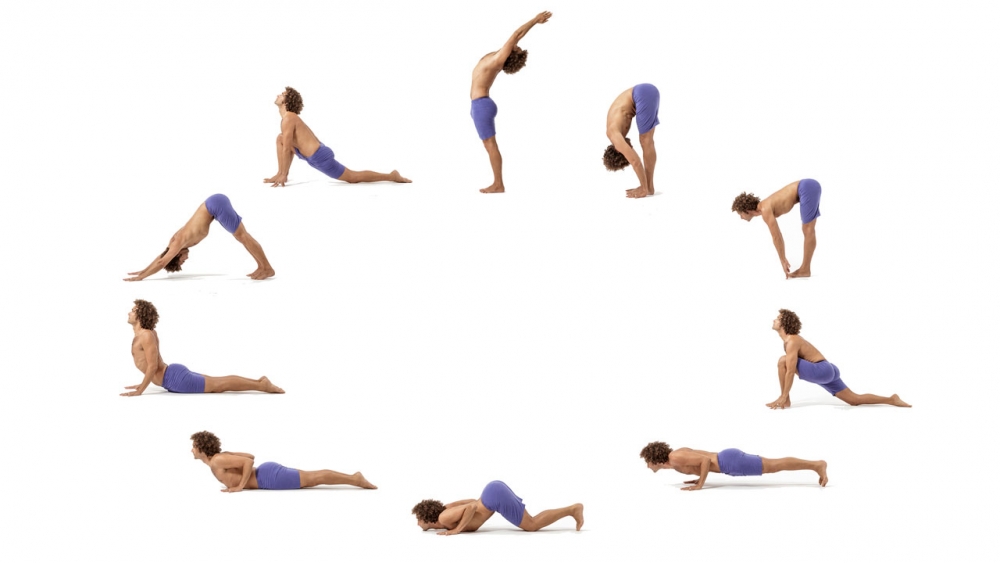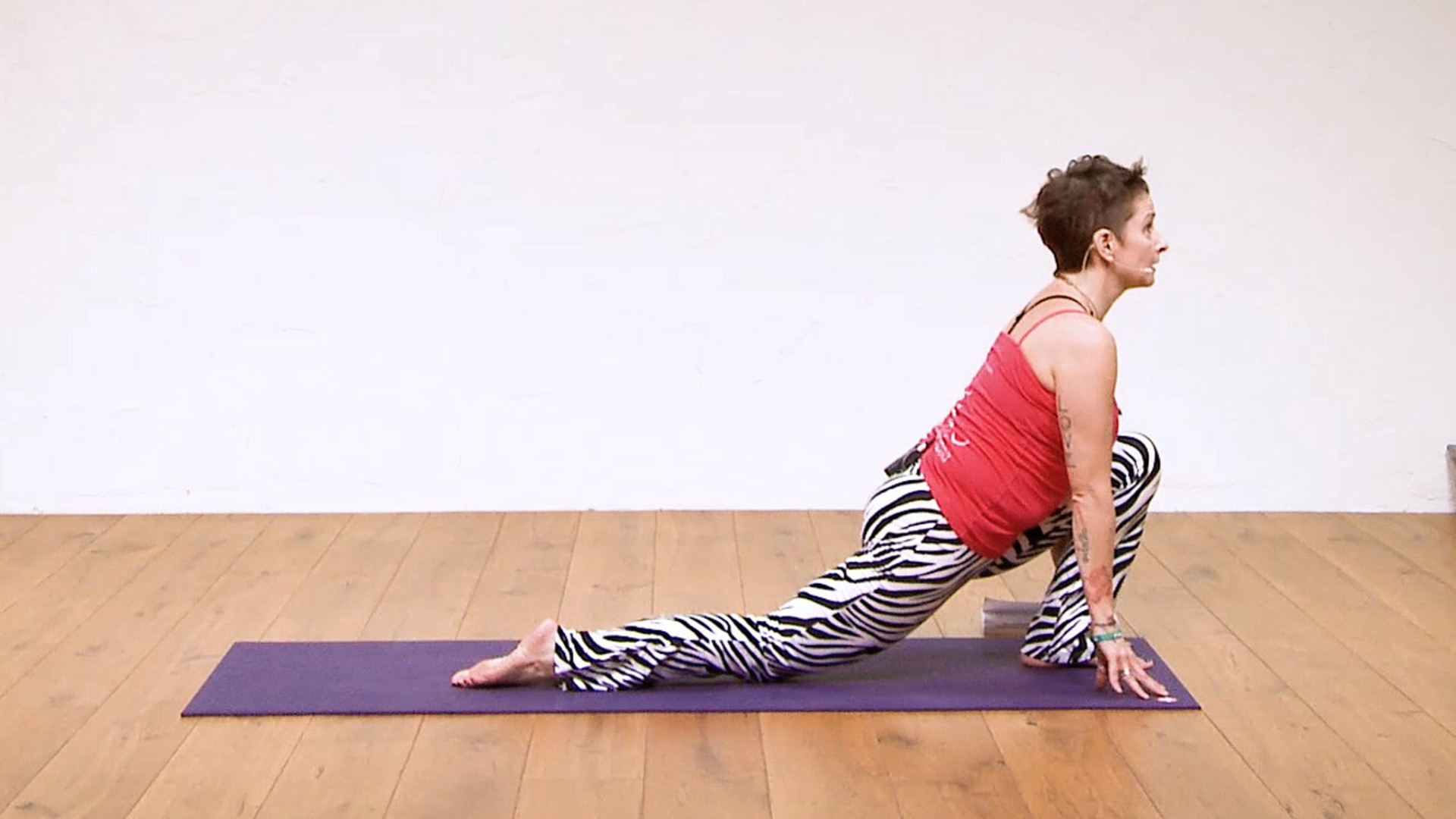Like so many others who practice yoga and other self-discovery practices, I am a firm believer that the practice of gratitude – the actual dynamic, diligent, every-single-day cultivation of gratitude – can positively change a human being’s life. A heart full of gratitude can (and will) experience the world around it as one full of love, beauty and grace. As a yoga teacher, I feel it is one of my privileges and duties to create sacred space, where my students can dive deep within themselves in order to listen to what is in the deepest recesses of their hearts. In the process of doing so, I always plant the potential living seed of gratitude. On the mat, one of the most perfect ways to introduce the concept and the experience of gratitude is with Surya Namaskar
Expressing gratitude with Surya Namaskar
Surya Namaskar: Surya = Sun, Nama = to adore, to bow to. Sun Salutations may seem at first to be a simple set sequence of exercises to warm and tone the physical body. They quiet the chatter of the mind and connect body with breath. However, the real beauty of practicing is that we are able to expand our hearts’ abilities to love and feel gratitude, by bowing to the sun with the feeling-tone of awe, devotion and adoration. Without the life-giving and life-nurturing powers of the sun life on this earth would cease to exist. This profound truth, once uttered and heard, has the ability to drop any individual to the earth in gratitude!
In both ancient and modern times humans have been in awe of the massive bright ball of light in the sky. The visceral feeling of stepping out into the morning sun, hands outstretched upwards to feel the warmth of the sun’s energy, is a feeling that is timeless, priceless and known by more than just humankind. All things living on this earth reach out for the sun and its life-giving, life-nurturing powers.
On the mat after centering on our breath in Samasthiti, we reach up to the sun on an in-breath for our first pose of the Sun Salutation. The second physical (and symbolic) thing we do is exhale and fold, as if to draw the many benefits of the sun into ourselves and down into the Earth herself. This simple act of bowing in adoration to the sun is one that crosses boundaries of sex, color, nationality, religious and sexual preferences. It is safe to assume that we humans have been performing this heartfelt act of gratitude since ancient, pre-verbal times.
The classical version
Then one day (as I like to ‘storytell’ my students!) a yogi felt the need to stretch a hip flexor while performing his or her simple morning sun prostrations. This stepping back on the right, and then on the left (or whatever hip flexor was tight that morning) inspired a myriad of ways to honor the light of the sun without and the symbolic light of the sun within.
Traditionally performed in the direction of the rising sun, classical Surya Namaskar is a set of 12 exercises honoring the 12 aspects of the sun from dawn to dusk. As yogis began to cultivate the classical set sequences, 12 mantras were added to the established breath-infused asanas, in order to inspire 12 aspects of the sun into the daily life of the practitioner.
Learning the rules and then breaking them
What began as simple prostrations to the sun evolved into various set sequences, Classical Sun Salutations, each with their own strict rules of conduct. Most teachers have learned these ‘classical’ set sequences of our Indian forefathers (Tirumalai Krishnamacharya and his student Pattabhi Jois, Swami Sivananda, Swami Kripalvananda and Shiv Fatal Singh to name a few) And then they’ve moved forward to break those rules (hopefully with complete awareness and intelligence).
I am one of the many yoga teachers/practitioners that believe in learning classical Surya Namaskars and then adding to/building upon them. There is such a simple and precious perfection to the classical sequences, especially when we realize the original intention of gratitude that inspired them.
The benefits of the Surya Namaskar
The immense benefits that the creators of classical set sequences have passed onto modern-day practitioners are as awe-inspiring to me as the sun itself. Each asana (posture) is initiated by either an in-breath or an out-breath. The superb intelligence of the classical Surya Namaskars is that inhales inspire upward movements and exhales inspire downward movements; this is the natural way that Prana (life force energy) moves the body.
On a physiological level Classical Sun Salutations, with so many forward bends and backbends (remember the initial intention of bowing in reverence and adoration) stretch the front and back of the body efficiently and effectively.
Psychologically, Classical Sun Salutations (when done exactly the same for 6-12 or more repetitions) quiet the chatter of the mind by lulling it with repetitive movements infused with breath.
On a spiritual level Classical Sun Salutations infuse the practitioner with so much love, adoration and gratitude. Especially the ones with Anjaneyasana, a pose of devotion named after the little boy Anjaneeya (later Hanuman) who so loved the sun because he thought it was a giant version of his favorite fruit – a juicy sweet mango! This gratitude, which may begin as simply for the sun itself, always transforms into gratitude for so much more.
Whole body integration
Due to the fact that Classical Sun Salutations really only work the practitioner’s body in the sagittal plane of flexion and extension it is imperative to add asanas that work in the coronal plane of adduction and abduction as well as ones that work in the transverse plane of rotation. Modern day Vinyasa Flow practitioners know this fact very well and continuously find new ways to explore all three planes. By adding playful and creative movements to the strict set sequences that require so much forward bending and back bending, modern Vinyasa Flow practitioners twist, bend, thread, weave, cascade and flip their way into whole body integration!
In addition to experiencing so much strength, power, lightness, agility, mobility and FUN both on and off the mat, my hope is that modern-day practitioners also remember to pay homage to the ancient lineage that has gotten us to where we are today. By embodying the initial inspiration of Surya Namaskar we can dive deep into the process of honoring ourselves, each other, our teachers, all sentient beings on this fine earth and of course, Mama Earth and the Sun itself!
“Even after all this time the sun never says to the Earth “You owe me.” Look what happens with a love like that. It lights the whole sky.” – Hafiz.
One has to marvel (with a heart full of gratitude!) at how alive the practice of Surya Namaskar still is to this very day. The evolution of classical set sequences into the intricate, beautiful and graceful dances we see both in personal and community practices (as well as on the internet) is a true testament to the sun, its awe-inspiring eternal nature and the dynamic movement of life it both inspires and commands.
I thank you sun. I thank you for your friendship, for your light, for your warmth, for your gift of revealing the darkness within me, for reminding me of my own internal luminosity and for constantly illuminating infinite cosmic wisdom. Surya, to you I bow in gratitude.
EkhartYoga members – practice with Jennilee
In this short and sweet practice, learn the mantras for each of the 12 movements in a Sun Salutation, which signify each of the 12 aspects of the sun in the sky from dawn to dusk.
Gratitude for the sun, 30 mins, all levels, Hatha / Vinyasa flow


